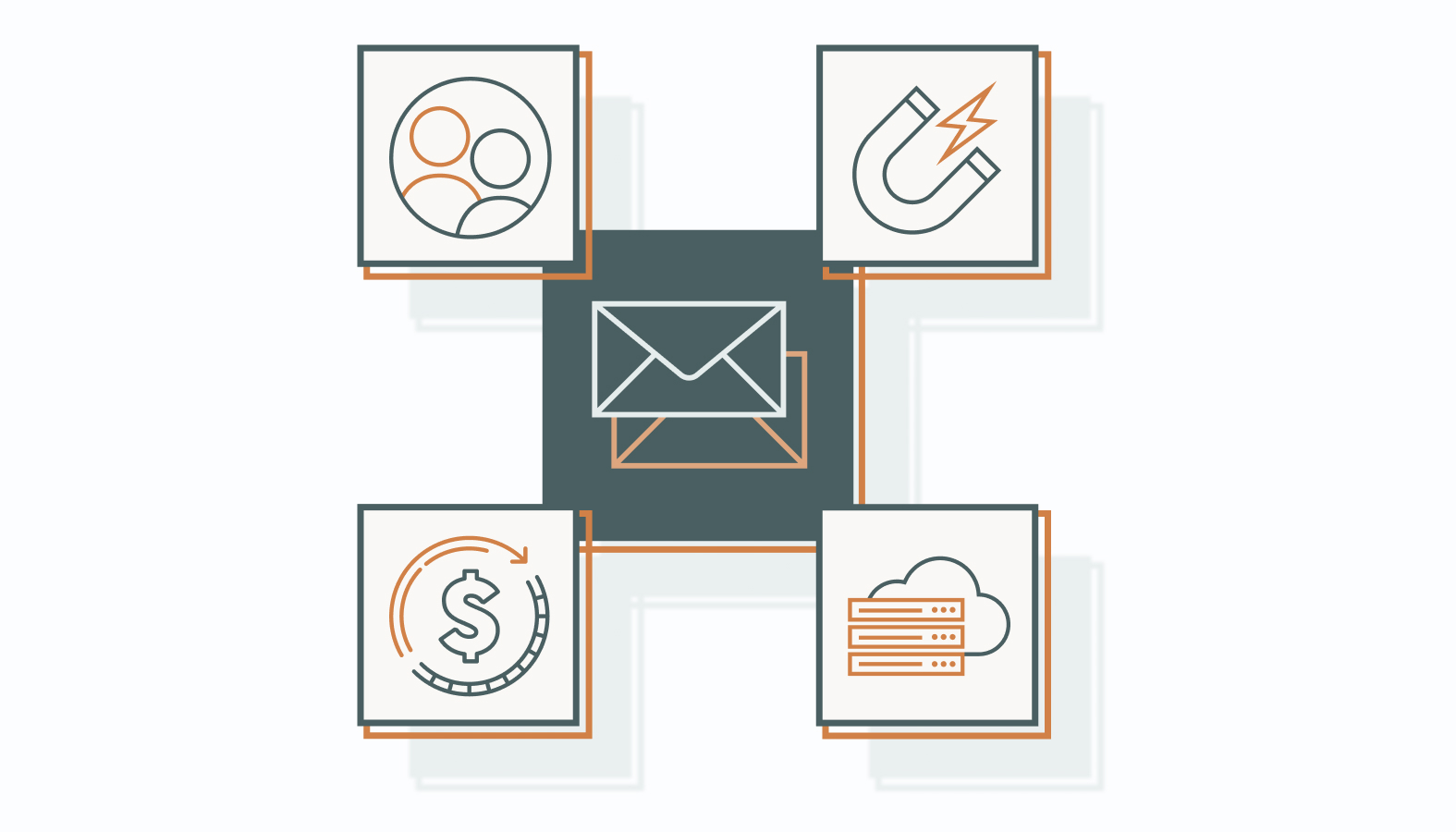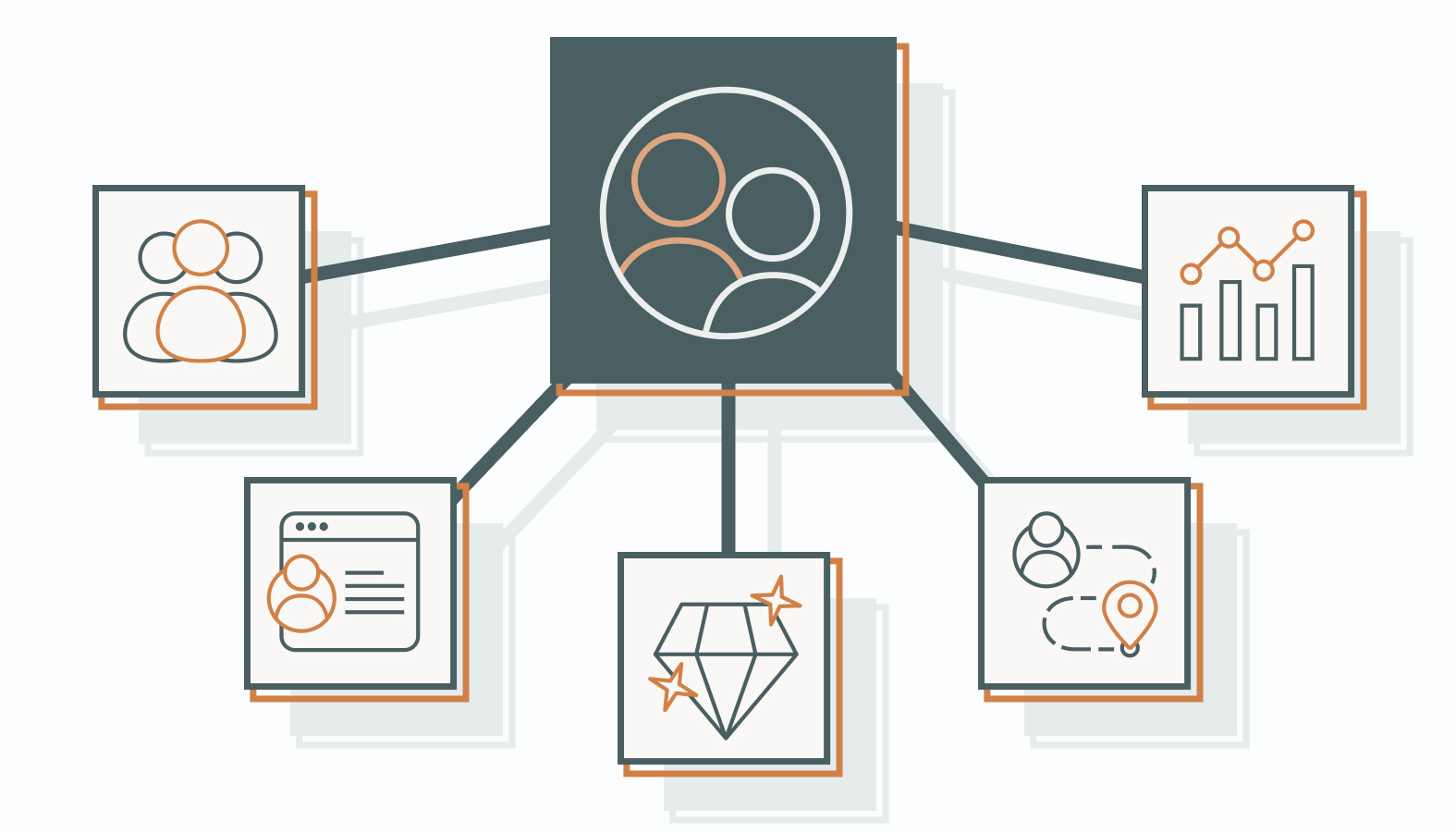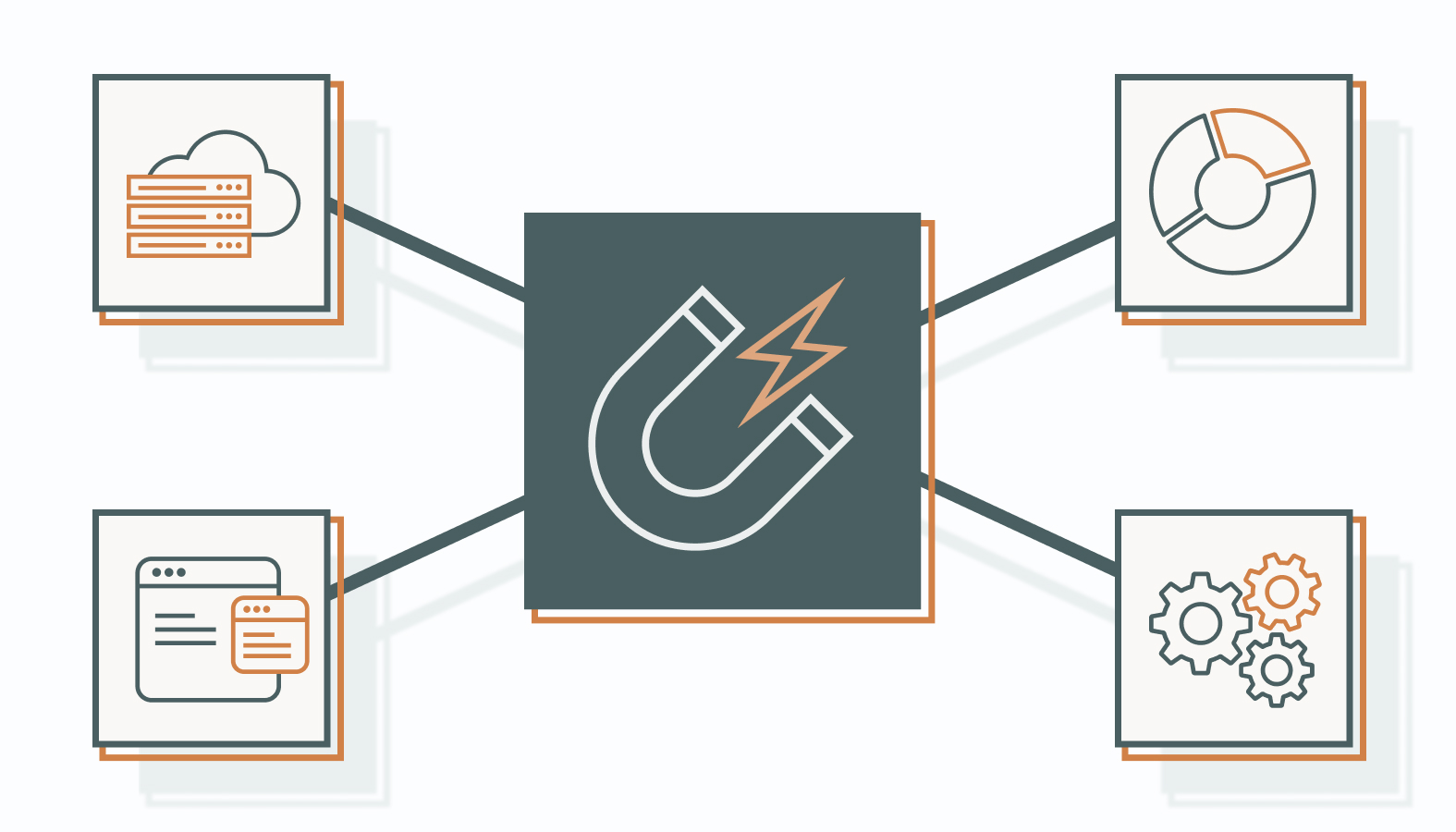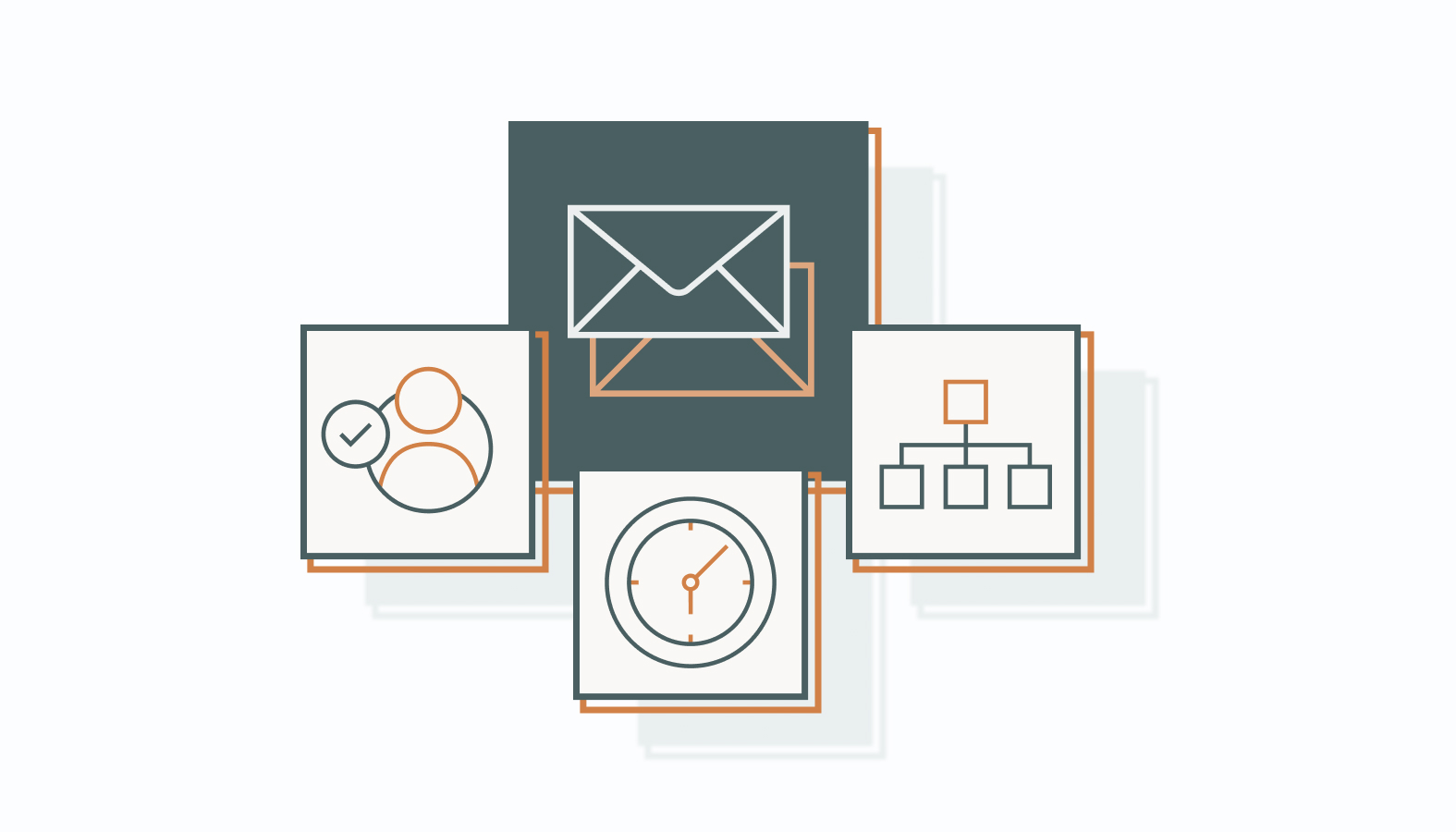Stop throwing darts in the dark; your emails deserve better than the digital abyss. The inbox is a black hole for generic messages, a graveyard of ‘spray-and-pray’ campaigns.
But what if your emails didn’t just land? What if they truly connected?
Data-driven email marketing isn’t about guesswork. It’s about turning raw customer insights into laser-focused, hyper-personalized campaigns that don’t just get opened; they get results.
Forget bland blasts. The goal is to craft messages that feel less like marketing and more like meaningful conversations.
This post explains how to send emails that demand attention, spark engagement, and drive measurable growth. Let’s pull your emails out of the void and into the spotlight.
Why Data-Driven Email Marketing Matters
Precision always wins. Data-driven email marketing turns bland outreach into laser-focused engagement, building stronger customer relationships and driving tangible business growth.
The Core Elements of a Successful Data-Driven Email Strategy
It comes down to three essentials: data collection, analysis, and execution. Nail these, and every email becomes sharper, more relevant, and more effective.
How to Collect High-Quality Email Data
Better data means better decisions. Here’s how to collect insights that actually move the needle:
- Subscription Forms – Fine-tune website sign-ups to capture key customer details.
- Surveys & Feedback – Get direct input on what matters most to your audience.
- Email Analytics – Track open rates, clicks, and unsubscribes to refine your strategy.
- CRM Systems – Leverage customer relationship management tools to monitor behaviors.
- Social Listening – Analyze trends to tap into audience preferences.
From Data to Strategy: How to Use Insights Effectively
Raw data alone does nothing. It’s the insights that count. Here’s how to put them to work:
- Segmentation – Group subscribers by demographics, behavior, or purchase history for precision targeting.
- Behavioral Analysis – Identify engagement patterns to sharpen your content.
- Predictive Analytics – Use past trends to anticipate customer needs.
- A/B Testing – Experiment with subject lines, CTAs, and content to optimize performance.
- Feedback Loops – Use real customer input to refine future campaigns.
Master data collection and execution so your emails won’t just land in inboxes; they’ll drive action.
Advantages of Data-Driven Email Marketing
A scattershot approach to email marketing is a waste of time and budget. Data flips the script, turning every message into a calculated move: targeting the right audience at the right time with the right message.
Here’s how data transforms email campaigns from forgettable to formidable.
1) Precision Audience Targeting
Generic blasts are dead weight.
Data-driven email marketing lets you segment with surgical precision. Demographics, purchase history, engagement trends, whatever the data says, you can act on it.
A clothing retailer, for example, tracks customer purchases. Instead of a general sale, they target activewear buyers with exclusive discounts on athleisure, resulting in higher open and click rates.
When emails align with customer preferences, engagement isn’t forced; it becomes inevitable.
2) Driving Higher Engagement
Personalization and timing separate great campaigns from inbox clutter.
Data doesn’t just tell you what your audience wants; it shows when they’re most likely to act.
Using behavioral insights, brands can tailor content dynamically. A fitness brand can send targeted emails promoting home workout gear to subscribers who browsed that category, optimizing for peak engagement times based on past open rates.
3) Maximizing ROI with Smarter Spending
Marketing budgets should pull their weight.
Data-driven strategies cut waste by refining targeting and enhancing personalization.
Focusing on likely converters improves engagement, reduces unsubscribes, and maximizes ROI.
4) Leveraging Data for Long-Term Strategy
The benefits don’t stop at immediate results. Data-driven email marketing lays the foundation for smarter, long-term decisions. The insights gained improve future emails and fine-tune entire marketing strategies.
Predictive analytics can forecast trends, enabling better product launches and inventory management.
Data-backed email marketing can be a brand’s competitive edge. Forgettable campaigns don’t stand a chance.
Understanding Your Audience: The Key to Better Email Marketing
Knowing your audience is influential. Data separates speculation from strategy, turning casual visitors into loyal customers.
Here’s how to make data your marketing power play.
Harnessing Demographic Data
Demographics are the foundation of audience insights. Age, gender, income, and education all influence buying decisions, and gathering this data has never been easier:
- Customer Surveys: Keep it brief and to the point.
- Sign-up Forms: A few well-placed questions offer valuable intel.
- Third-Party Data Services: Fill in the gaps with broader market insights.
For example, a luxury brand curates exclusivity for high-income buyers, while a tech company captivates younger audiences with innovation.
Segmenting based on demographics ensures targeted messaging that resonates.
Tracking Customer Behavior for Smarter Targeting
Behavioral data uncovers what customers want before they say a word. Key indicators include:
- Purchase History: Spot buying patterns and predict future purchases.
- Browsing Behavior: Understand what captures attention.
- Product Preferences: Items frequently viewed or added to cart signal demand.
If a customer regularly buys athletic gear, a well-timed email showcasing the latest sportswear keeps them engaged and ready to buy. These insights drive proactive, relevant marketing.
Using Psychographics to Align with Customer Values
Demographics tell you who your customers are. Psychographics tell you why they buy. Attitudes, values, and lifestyle choices shape decisions. Unearth these insights through:
- Surveys: Discover what truly matters to your audience.
- Feedback Forms: Identify recurring themes in customer sentiment.
- Social Media Analysis: Track conversations and brand interactions.
Aligning with customer values builds deeper connections. A sustainability-focused brand emphasizing eco-friendly practices naturally attracts environmentally conscious buyers, fostering long-term loyalty.
Optimizing Customer Journey with Transactional Data
Every purchase and interaction tells a story. Collecting and analyzing this data fine-tunes your business strategy:
- Sales Data: Identify trends and optimize offerings.
- Customer Service Interactions: Pinpoint areas for improvement.
- Online Activity Logs: Eliminate friction points in the customer journey.
If a product feature generates repeated questions, it’s a signal to refine messaging or enhance support. Small adjustments based on these insights drive significant improvements in customer satisfaction.
Measuring Engagement for Continuous Improvement
Engagement metrics reveal how well your brand connects with its audience. Key indicators include:
- Email Open Rates
- Page Views
- Social Media Interactions
- Loyalty Program Participation
Low engagement isn’t a dead end; consider it a puzzle to solve. If social media interactions dip, a fresh campaign with exclusive content, giveaways, or interactive posts can reignite interest.
Use engagement metrics to identify and address areas for improvement. Use data wisely, and you’ll craft smarter marketing, better experiences, and stronger brand loyalty.
Elevating Engagement Through Personalization
Forgettable emails get deleted. Personalized ones get read. Turning mass outreach into meaningful communication is the difference between background noise and genuine engagement.
Aligning emails with individual behaviors and preferences shifts them from generic blasts to valuable interactions.
Collecting the Right Data for Personalization
Effective personalization starts with data. The better you understand your audience, the sharper your messaging. Key data points include:
- Demographic Data: Age, gender, and location sourced from sign-ups and surveys.
- Behavioral Data: Browsing habits, email interactions, purchase history.
- Transactional Data: Order details, frequency, and average spend.
- Psychographic Data: Customer values, interests, and lifestyle preferences—pulled from surveys and social engagement.
A strong data foundation enables messaging that feels relevant instead of robotic.
Effective Audience Segmentation Strategies
Data without segmentation is a wasted opportunity. Segmentation ensures the right message reaches the right audience. Common strategies include:
- Purchasing Habits: Grouping customers by product preferences or buying frequency.
- Engagement Levels: Identifying highly engaged users versus those needing re-engagement.
- Demographics: Tailoring messaging based on location, age, or other attributes.
Segmentation turns bland mass emails into precision-targeted messages that drive results.
Creating Dynamic, Adaptive Content
Content should flex to fit the recipient—not the other way around. Smart personalization includes:
- Product Recommendations: Suggesting items based on browsing or purchase history.
- Exclusive Offers: Customizing discounts based on buying behavior.
- Relevant Content: Delivering articles, updates, or advice aligned with user interests.
Dynamic content makes emails feel like valuable insights, not inbox clutter.
Scaling Personalization with Automation
Scaling personalization requires automation. The right tools ensure messages land at the perfect moment without manual effort. Key automation triggers include:
- Behavior-Based Emails: Abandoned cart reminders, post-purchase follow-ups, re-engagement campaigns.
- Milestone Messages: Birthday greetings, membership anniversaries, VIP offers.
- Engagement Triggers: Emails responding to browsing patterns or interaction history.
Automation delivers timely, relevant, consistent engagement, building stronger customer relationships with every interaction.
Optimizing Email Campaigns with Data-Driven Insights
Winning email campaigns don’t happen by chance. They’re built on data that refine messaging, timing, and targeting to maximize impact.
When businesses harness data-driven insights, engagement rises, customer relationships strengthen, and conversions increase.
Precision Personalization That Drives Action
Generic emails get ignored. Personalized ones get opened. Data powers smarter customization, aligning messaging with individual preferences and behaviors.
- Interest-Based Content: Deliver updates tailored to what customers actually care about, whether it’s product recommendations, exclusive previews, or personalized deals.
- Behavior-Driven Messaging: Track past interactions to craft emails that feel intuitive, more like a curated shopping experience than a generic sales pitch.
- Purchase-Based Suggestions: Leverage past buying patterns to highlight relevant add-ons, restock reminders, or VIP offers that make sense for each customer.
Relevance determines whether an email drives action or gets buried in the inbox.
Timing Optimization for Maximum Impact
Sending an email is one thing. Sending it when it will be opened is another. Timing optimization ensures messages land when attention is highest.
- Engagement Data Analysis: Study customer habits to identify peak open times, then schedule accordingly.
- Segment-Specific Timing: Different groups engage at different times. Professionals check emails in the morning, night owls scroll in the evening.
- Smart Frequency Control: Stay top-of-mind without becoming background noise.
When emails arrive at the right moment, they get noticed and drive action.
Scalable Automation for Efficient Outreach
Personalization and timing create impact, but it is challenging to scale without automation. The right tools make data-driven campaigns effortless.
- Triggered Emails: Automate emails based on customer actions, like cart abandonment or repeat purchases.
- Behavior-Responsive Workflows: Adjust messaging based on engagement levels, ensuring no customer feels overlooked or bombarded.
- Efficiency at Scale: Maintain a high-touch experience as your audience grows without increasing manual workload.
Automated, data-driven email marketing doesn’t just improve efficiency. It amplifies performance.
The Future of Data-Driven Email Marketing
Email marketing is evolving, and staying ahead means embracing data like a pro.
- AI and machine learning are sharpening targeting and personalization, allowing brands to anticipate customer behavior with near-clairvoyant accuracy.
- Hyper-personalization is shifting from a competitive edge to an expectation as customers demand seamless, one-to-one experiences across every touchpoint.
- Data privacy regulations are tightening, making transparency and trust non-negotiable.
- Omnichannel integration turns email into a key player in the broader customer journey, ensuring platform continuity.
And let’s not forget engagement. Static emails are out, replaced by dynamic, real-time content that responds to user behavior. Interactive elements like quizzes, live content, and personalized recommendations will make inboxes feel less like a one-way broadcast and more like an ongoing conversation.
Let’s Future-Proof Your Email Strategy
The inbox is a battleground for attention. Only the sharpest, most relevant messages break through.
That’s where strategy meets execution.
Want your emails to do more than just land?
Schedule a candid conversation with one of our experts, and let’s talk about turning your email marketing into a high-performance engine.










